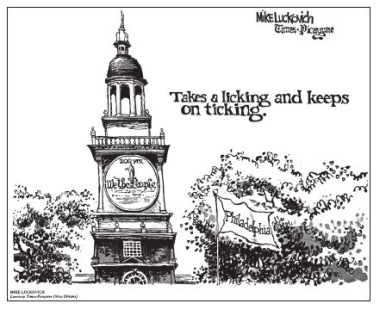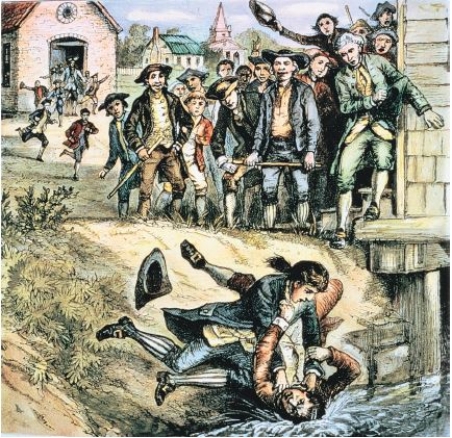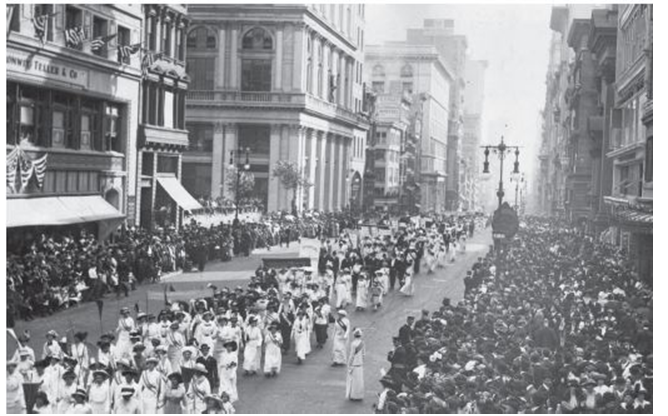A) the right to bear arms?-Consider This: This concept was described in John Locke's Second Treatise of Civil Government.
B) the divine right
C) consent of the governed
D) executive privilege
Correct Answer

verified
C
Correct Answer
verified
Multiple Choice
Which of the following are rights that are inherent in all human beings and not dependent on government?
A) natural rights
B) positive rights
C) intrinsic laws-Consider This: These rights were described in John Locke's Second Treatise of Civil Government.
D) Constitutional law
Correct Answer

verified
Correct Answer
verified
Multiple Choice
Which of the following was part of both the Articles of Confederation and the Constitution?
A) a congress
B) the presidency-Consider This: The government under the Articles did not have an executive branch,one of the sources of inefficiency in that system.
C) the federal judiciary
D) the right of taxation by the federal government
Correct Answer

verified
Correct Answer
verified
Multiple Choice
The Constitution limits the government's ability to suspend writs of habeas corpus.What does this protect individuals against?
A) free speech infringement
B) taxation of private property
C) unlawful detention
D) infringement of religious freedom-Consider This: This is a major civil liberty as it limits the power of government in peacetime.
Correct Answer

verified
Correct Answer
verified
Multiple Choice
How is a constitutional amendment ratified?
A) either by a majority of state legislatures or by special state conventions in a majority of the states-Consider This: Amending the U.S.Constitution in a very difficult process,where super majorities are required throughout.
B) either by three-fourths of state legislatures or by special state conventions in three-fourths of the states
C) either by a majority of state governors or by a majority of the U.S.Senate
D) either by three-fourths of state governors or by three-fourths of the U.S.Senate
Correct Answer

verified
Correct Answer
verified
Multiple Choice
Which of the following were most likely to oppose the proposed Constitution?
A) lawyers
B) merchants
C) small farmers
D) large landowners-Consider This: The Federalists were generally drawn from the economic elite.
Correct Answer

verified
Correct Answer
verified
Multiple Choice
What did the Connecticut Compromise help to establish?
A) the Senate and the House of Representatives
B) the federalist system-Consider This: This compromise was designed to reconcile the differences between the Virginia and the New Jersey plans.
C) an independent judiciary
D) universal male suffrage
Correct Answer

verified
Correct Answer
verified
Multiple Choice
The Constitution is a short document that has survived for more than 200 years,in large part
because of its adaptability to the needs of new generations.  Credit: Mike Luckovich/Creators Syndicate
-Which of the following provides for the Constitution's flexibility?
Credit: Mike Luckovich/Creators Syndicate
-Which of the following provides for the Constitution's flexibility?
A) Article I-Consider This: Article I outlines Congressional powers,including the "necessary and proper" clause that allows the government to change over time.
B) Article III
C) Article V
D) Article VI
Correct Answer

verified
Correct Answer
verified
Multiple Choice
What number of slaves did the delegates agree would be counted for determining population for representation in the House of Representatives?
A) one-third
B) three-fifths
C) two-thirds-Consider This: This famous constitutional compromise led to slaves being counted in terms of representation for the House of Representatives.
D) four-fifths
Correct Answer

verified
Correct Answer
verified
Multiple Choice
While working on the Constitution,what aspect of the new government most concerned James Madison?
A) foreign affairs
B) slavery
C) elitist control-Consider This: Checks and balances and separation of powers were established to deal with this issue.
D) tyranny of the majority
Correct Answer

verified
Correct Answer
verified
Multiple Choice
Burning the flag is constitutionally protected because it is an act of __________.
A) political speech
B) privacy-Consider This: Although flag burning is an unpopular action,the Supreme Court has generally protected it on these grounds.
C) due process
D) commercial expression
Correct Answer

verified
Correct Answer
verified
Multiple Choice
 Credit: North Wind Picture Archives/Alamy Stock Photo
-Shays's Rebellion contributed to calls for a stronger national government because
Credit: North Wind Picture Archives/Alamy Stock Photo
-Shays's Rebellion contributed to calls for a stronger national government because
A) the Massachusetts state militia was stronger than the United States army.
B) farmers in other states assisted those affected by the foreclosures.-Consider This: Farmers throughout the country were struggling,not just those in Massachusetts.
C) foreigners supported Shays's Rebellion and sent supplies to help the farmers.
D) it indicated that the state and national governments were weak.
Correct Answer

verified
Correct Answer
verified
Multiple Choice
 Credit: North Wind Picture Archives/Alamy Stock Photo
-Based on this image,what was one result of the foreclosures imposed by Massachusetts state courts?
Credit: North Wind Picture Archives/Alamy Stock Photo
-Based on this image,what was one result of the foreclosures imposed by Massachusetts state courts?
A) The Committee of Correspondence-Consider This: These protests led to a call for a convention to consider revising the Articles of Confederation.
B) The nation moved away from agriculture and became more industrial.
C) Farmers moved westward to enjoy the available land there.
D) A violent farmer uprising under the direction of Daniel Shays.
Correct Answer

verified
Correct Answer
verified
Multiple Choice
Which of the following generally favored a stronger national government and supported the proposed U.S.Constitution?
A) Daniel Shays
B) Federalists
C) Anti-Federalists Consider This: This group supported the work of the Constitutional Convention and included James Madison.
D) Constitutionalists
Correct Answer

verified
Correct Answer
verified
Multiple Choice
The U.S.Constitution was adopted in response to the weaknesses of which document?
A) Declaration of the Rights of Man
B) Magna Carta
C) the Declaration of Independence-Consider This: While the Declaration of Independence was a critical foundational document,the document in question served as the legal organizing document for the early United States.
D) the Articles of Confederation
Correct Answer

verified
Correct Answer
verified
Multiple Choice
Which of the following most directly protects individuals' civil liberties?
A) Second Treatise of Civil Government
B) The Federalist Papers
C) the Bill of Rights
D) the Declaration of Independence-Consider This: These were added to the Constitution in order to allay the fears of the Anti-Federalists.
Correct Answer

verified
C
Correct Answer
verified
Multiple Choice
In Federalist 10,who wrote,"The most common and durable source of factions has been the various and unequal distribution of property"?
A) Alexander Hamilton-Consider This: In this work,the author warned of factions,which we might today call interest groups.
B) Thomas Jefferson
C) John Jay
D) James Madison
Correct Answer

verified
Correct Answer
verified
Multiple Choice
What was a fear of the Anti-Federalists during the Constitutional Convention and subsequent debate?
A) that a weak national government would undermine the survival of the United States-Consider This: The Constitution was designed to expand the power of the national government while protecting the power of states and the liberties of individuals.
B) that a strong national government would infringe on the rights of the states
C) that a powerful judiciary would restrict freedom of religion
D) that powerful state governments would infringe on individual liberties
Correct Answer

verified
Correct Answer
verified
Multiple Choice
Which branch of government is responsible for passing laws?
A) bureaucratic
B) judicial
C) executive-Consider This: The executive branch is responsible for implementing laws but relies on another branch to create laws.
D) legislative
Correct Answer

verified
Correct Answer
verified
Multiple Choice
Amending the Constitution to give women the right to vote was an important step in the
women’s rights movement. Here suffragettes march in New York City in 1913 for the right
to vote.
 -How did the protesters' success lead to change?
-How did the protesters' success lead to change?
A) States gained greater power over voter eligibility.
B) The Constitution offered more specific mandates on voter eligibility.
C) The Equal Rights Amendment was ratified.-Consider This: The ERA was proposed in 1923 and has yet to be ratified.
D) The people gained direct access to the lawmaking process.
Correct Answer

verified
B
Correct Answer
verified
Showing 1 - 20 of 39
Related Exams